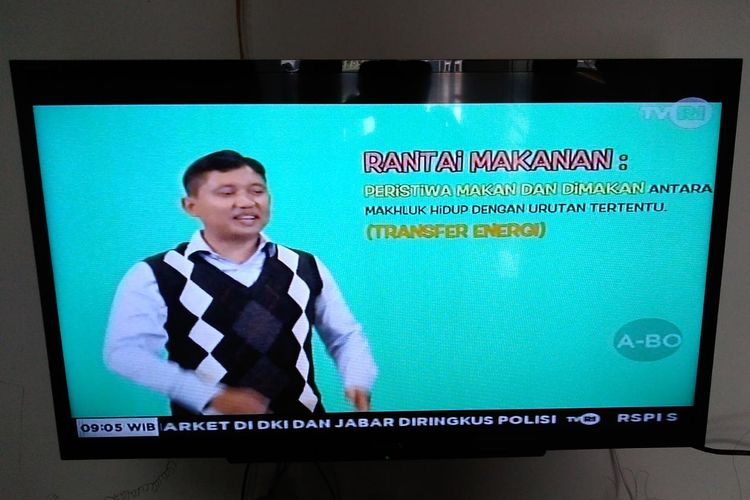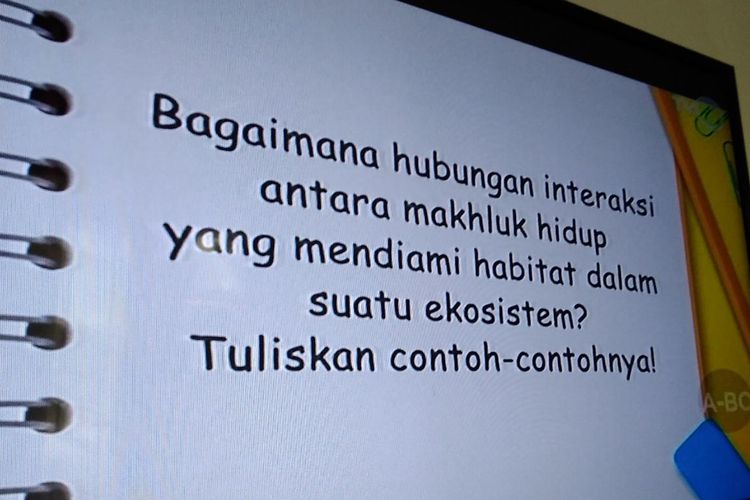Grades 4-6 Elementary School, Here Are the Summary Material: Living Things and Their Environment

Recently, Learning from Home program aired by National TVRI . On the episode Tuesday, April 21, 2020 09.00-09.30 West Indonesia Time was a show for students in grades 4-6 elementary school. If you miss the show, here are the contents of the show for students in grades 4-6, summarized by Kompas.com . For the X Science material, the theme is Living Things and their Environment, guided by Ms. Herman. What is discussed? Also read: Middle School Students, This is a Summary of Learning from Home on TVRI: 4 Indonesian Figures Here it is Learning from Home material that was initiated by the Ministry of Education and Culture ( Kemdikbud ) in collaboration with the National TVRI. 1. Food chains and nets The food chain is the event of energy transfer from one particular living thing to another. For example: Rice is eaten by rats, rats are eaten by snakes, snakes are eaten by eagles, eagles die and are broken down by decomposing organisms. On that occasion, students were invited to reason about the number of organisms and types of organisms. The explanation is that the number of producers must be the most and followed by level 1 consumers, level 2 consumers and so on. 2. Interactions in food webs For this material, there are shows describing interactions in the food webs. For example when in a zoo there are: Manufacturer: grass Consumer: deer animals But, deer animals can be eaten by tigers. This is the interaction that takes place in food webs. a. Producers are living things that can make their own food from the sun due to photosynthesis. b. Level 1 consumers are filled with animals that depend on producers, this can be exemplified by deer. c. Level 2 consumers are meat-eating animals that are exemplified by tigers. But, consumers level 3 and so on is not the end of the food web. d. Decomposers are micro-organisms whose job is to decipher the soil. The function of this component is very valuable as soil fertility. Also read: This is the Summary of the First Impressions on Jalan Sesama for PAUD Children on TVRI Because, what is described will be reused by plants to make food and photosynthesis. Examples of decomposers: fungi, bacteria, small animals caterpillars or grubs. On that occasion, Learning from Home also gave questions to students to work with parents or teachers Question: What is the difference between food chains and food webs? 3. Miniature ecosystem a. Ecosystems are interdependent relationships between living things and their environment. b. Mutualism is a relationship between living things that is mutually beneficial. c. Parasitism is a form of detrimental relationship experienced by one living organism, while others benefit. For example: parasites and host plants, parasites grow and develop from nutrients in the host plant. Over time, the host plant will die. d. Komensalism is a form of relationship between organisms, one of which benefits, but the other is neither disadvantaged nor benefited. For example: a small ramora will follow and take shelter under a shark, he will get the advantage of eating from the leftovers from sharks. Also read: 7 Summary of Shows of PAUD Children's Sesame Street on TVRI April 14th Question: How are the interactions between living things that inhabit habitats in an ecosystem? Write examples!

edukasi.kom





No comments:
Post a Comment